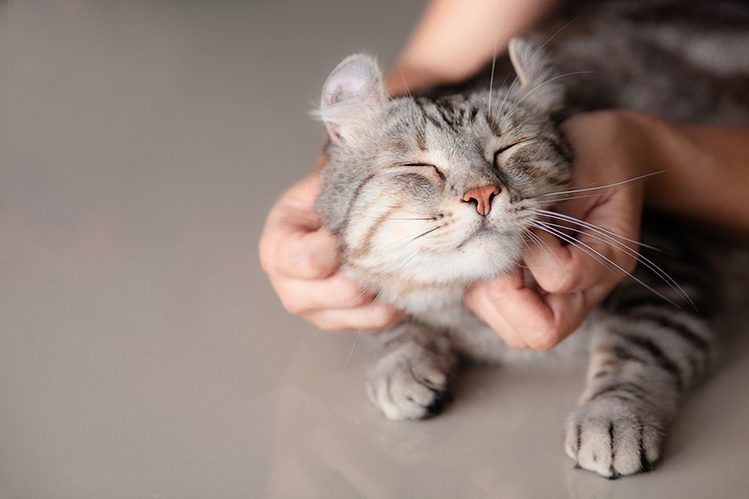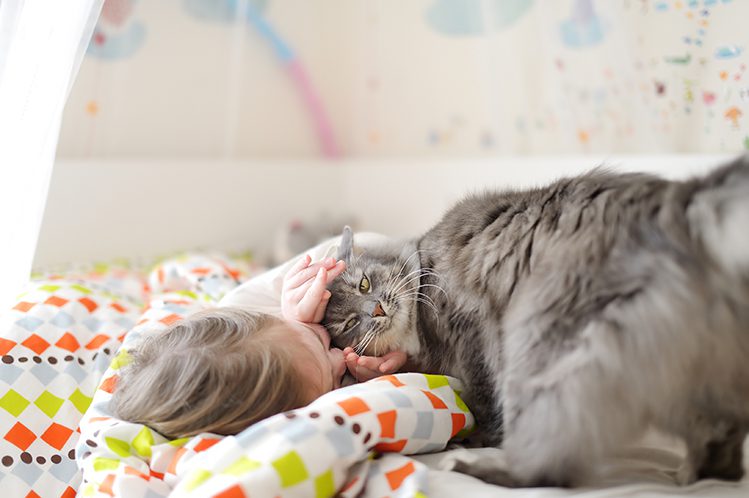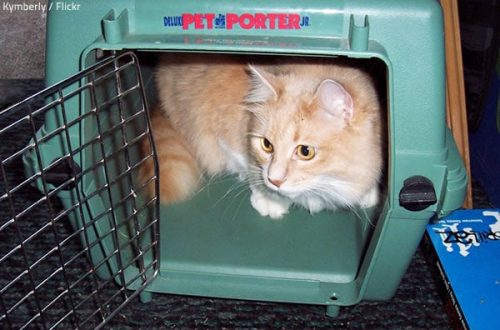
How to befriend a cat with a child
Some cats are natural babysitters. They can always amuse the baby, captivate him with the game and even allow you to pull his ear. However, most cats walk on their own, and the question “How to make a cat and a child make friends?” relevant for many families. Don’t worry, we’ll help you!
Making friends between a cat and a child is not as difficult as it might seem. Of course, there are cases when this fails and the cat stubbornly avoids the child, but these are rather exceptions. Usually, the relationship between children and cats develops well, and in many cases even develop into a real friendship. Do you want the same? Our 9 steps will help!
- Step 1. Security.
It’s terrible when a cat scratches a child. But often the opposite happens. There are a huge number of examples when children inflicted severe injuries on pets – accidentally or even consciously. That’s why the most important step is to instill in your child the basics of behavior with pets. Explain what can and cannot be done. Instill a sense of care and responsibility.
- Step 2. Personal space.
The cat should have a shelter where no one will disturb her. It can be a bed or some kind of high stable shelf where the cat likes to lie. It is important to explain to the children that when the pet is in its “house” and resting, it is better not to touch it.

Do not leave small children with pets unattended.
- Step 3. The ability to do “your own business.”
The cat should be able to eat, drink and go to the toilet when she needs it. These are the basic needs of a pet. If the child interferes with the cat and provokes stress, then she will perceive it accordingly.
- Step 4. Attention – equally.
Often cats are “jealous” of their owners and because of this they begin to “dislike” children. They can be understood. Usually, with the advent of a child in the house, pets are almost forgotten, and not every cat will take this calmly. No matter how little time you have, try to give your pet at least a little attention every day. A kind word, new toys and treats will come in handy.
- Step 5. Joint games.
It’s great to play with both the cat and the child. You can teach your child to hold a teaser or to launch a mechanical toy for a cat. Of course, at the first stages, such games should take place under your supervision, but later the child will be able to play with the cat on his own.
- Step 6. Toys apart!
Games are games, but toys for cats and children should be different. Don’t let your child take the mouse or ball away from the cat. And vice versa. This is important not only for building relationships, but also for hygiene.
Vaccinate your pet regularly and treat it for parasites. This is always important, and even more so when there are children in the house.
Step 7 Treats
The way to the heart is through the stomach, remember? This works for cats too. Get delicious healthy treats and invite your child to treat the pet from the palm of your hand. The ice will definitely melt! Be careful: do not overdo it with treats. Read on the package how many treats you can give your cat per day and do not exceed the norm. Remember, different treats have different norms. Always read the text on the packaging carefully.

Step 8. Minimum stress.
If a cat is experiencing stress, she is not up to friendship. Try to create less stress for your pet. If you see that the cat is nervous or angry, quickly switch her attention. Don’t push your luck by letting your child play with a tense cat.
Teach your children the rules of hygiene. The child should know not to play with the cat’s bowls and litter and to wash their hands after playing with the cat.
Step 9 Everything has its time.
The main thing is not to rush things. Usually children produce a lot of movement and noise, and these are stressful factors for a cat. Do not demand from the pet that he immediately “fell in love” with the child and joyfully played with him. Do not bring the cat to the child forcibly, do not put it in the arms of the child if it breaks out. Give the cat as much time as needed. The ideal option is when a cat approaches the baby because she is interested and wants to approach him, and not because she was dragged to him.
Friends, we will be glad if you share your stories with us. How was the relationship between your children and pets?





